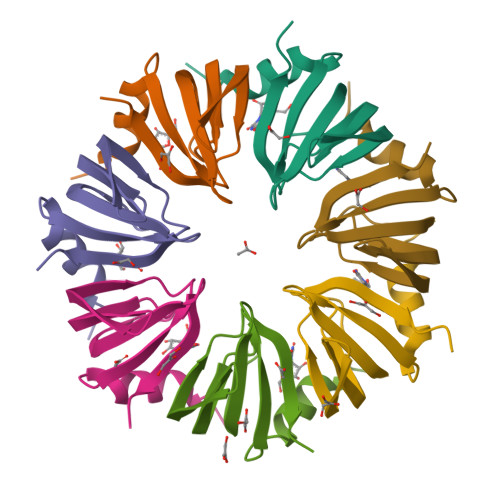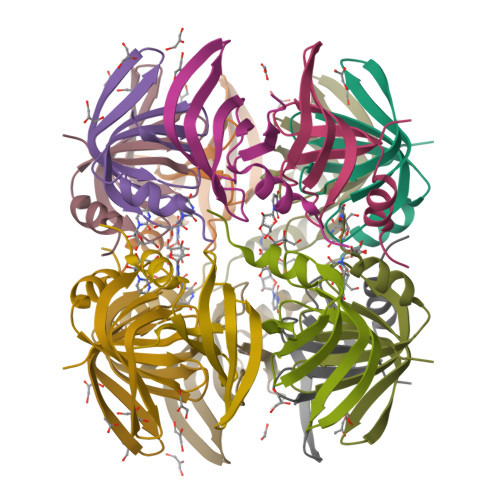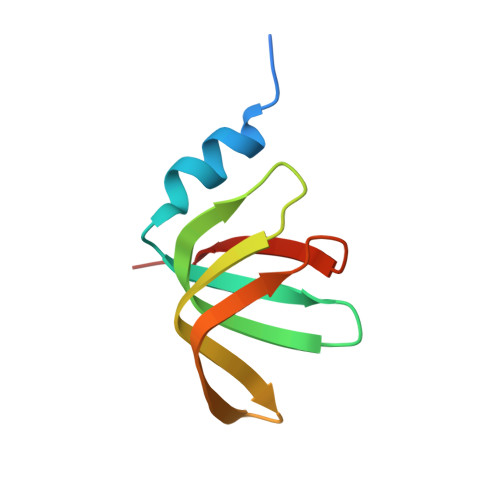The oligomerization and ligand-binding properties of Sm-like archaeal proteins (SmAPs)
Mura, C., Kozhukhovsky, A., Gingery, M., Phillips, M., Eisenberg, D.(2003) Protein Sci 12: 832-847
- PubMed: 12649441
- DOI: https://doi.org/10.1110/ps.0224703
- Primary Citation of Related Structures:
1JBM, 1JRI, 1LNX, 1LOJ - PubMed Abstract:
Intron splicing is a prime example of the many types of RNA processing catalyzed by small nuclear ribonucleoprotein (snRNP) complexes. Sm proteins form the cores of most snRNPs, and thus to learn principles of snRNP assembly we characterized the oligomerization and ligand-binding properties of Sm-like archaeal proteins (SmAPs) from Pyrobaculum aerophilum (Pae) and Methanobacterium thermautotrophicum (Mth). Ultracentrifugation shows that Mth SmAP1 is exclusively heptameric in solution, whereas Pae SmAP1 forms either disulfide-bonded 14-mers or sub-heptameric states (depending on the redox potential). By electron microscopy, we show that Pae and Mth SmAP1 polymerize into bundles of well ordered fibers that probably form by head-to-tail stacking of heptamers. The crystallographic results reported here corroborate these findings by showing heptamers and 14-mers of both Mth and Pae SmAP1 in four new crystal forms. The 1.9 A-resolution structure of Mth SmAP1 bound to uridine-5'-monophosphate (UMP) reveals conserved ligand-binding sites. The likely RNA binding site in Mth agrees with that determined for Archaeoglobus fulgidus (Afu) SmAP1. Finally, we found that both Pae and Mth SmAP1 gel-shift negatively supercoiled DNA. These results distinguish SmAPs from eukaryotic Sm proteins and suggest that SmAPs have a generic single-stranded nucleic acid-binding activity.
Organizational Affiliation:
Howard Hughes Medical Institute, Molecular Biology Institute, Los Angeles, California 90095-1570, USA.






















